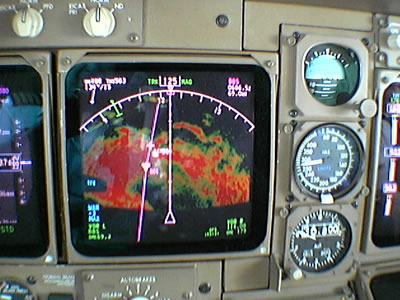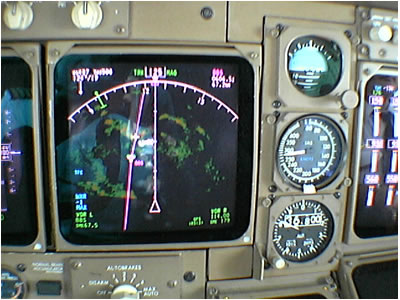Rain or Snow
Rain and snow cause visibility problems and also can make the runway slippery. Visibility problems are covered under "Instrument Flight".
Slippery or contaminated runways cause problems on both takeoff and landing. They can reduce the acceleration on takeoff and also make stopping difficult on landing. There are limits to which pilots can operate their planes in these conditions and there are performance penalties that must be taken into account before a plane lands or takes-off. For example, on landing the distance required to stop on a wet runway is 15% greater than that required on a dry runway.
Using the weather radar
 The pilot panel here shows the weather ahead.
The white triangle is the plane. Here I am 50 nm off to the right of track
avoiding a monsoon on the East coast of India.
The plane is at 37,000 feet. Refer to instrument flight page for more information on various pilot panels.
The pilot panel here shows the weather ahead.
The white triangle is the plane. Here I am 50 nm off to the right of track
avoiding a monsoon on the East coast of India.
The plane is at 37,000 feet. Refer to instrument flight page for more information on various pilot panels.
The radar here is pointed down at five degrees. Normally we use one or two degrees.
The picture here shows a 1-2 degree view.

You can see why I have chosen to deviate to give my passengers a smooth flight. The 1-2 degree view shows the clear path as we over- flew the lower weather displayed on the 5 degree view